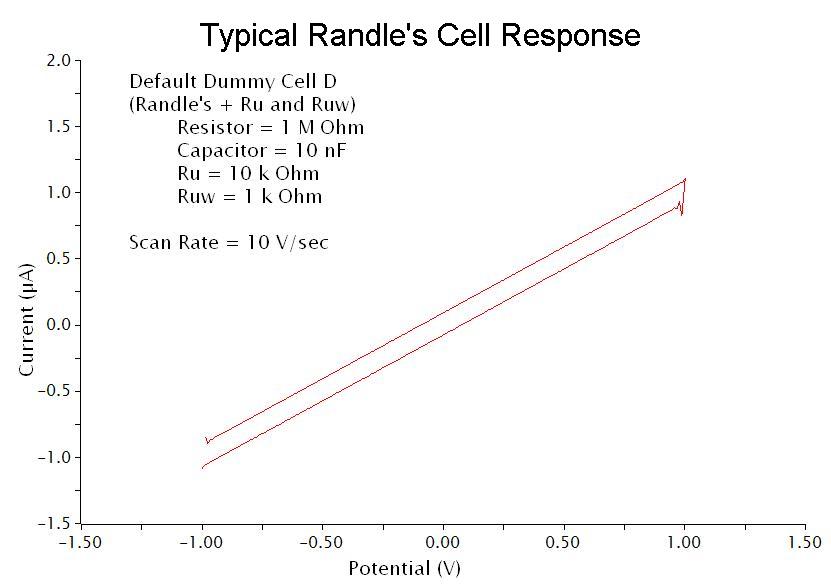
This article is part of the Pine WaveNow USB Potentiostat User's Guide[/call_to_action]
[toggle title = “Dummy Cell Description”]
A dummy cell is a simple circuit consisting of a few resistors and capacitors which can be used to test the behavior of a potentiostat. The WaveNow (and WaveNano) potentiostats are shipped with a circuit board which contains several dummy cell circuits, each of which can easily be connected to the potentiostat via the cell port (see photo below).
The circuit board has four positions (“CELL A”, “CELL B”, “CELL C”, and “CELL D”).
[call_to_action]The first position, “CELL A”, may be used for field verification of the instrument's calibration (along with the proper software and calibration instrumentation).
The circuit board included with the WaveNano potentiostat has a special position, “CELL E”, in place of “CELL B”. This special position offers a dummy cell with a one gigaohm resistor which is ideal for testing very low current behavior.
[/call_to_action]
Each of the dummy cell positions has the same basic circuit (see schematic diagram below), but they differ with respect to the exact resistor and capacitor values in the circuit. A table on the back side of the dummy cell lists the resistor and capacitor values, and this information is also available in the tabs below.
[toggle title = “Typical Circuit Configurations”]
By using various settings of the five dip switches, it is possible to test the potentiostat against a variety of different loads, each of which might mimic the load presented by a “real” electrochemical cell. In each configuration, the reference electrode is separated from the reference sense point (TP5, TP7, or TP9) by a resistor (Rref), and the counter electrode is also separated from this point by a resistor (Rctr, or solution resistance). Similarly, the working electrode is separated from the working sense point (TP6, TP8, or TP10) by a small resistor (Ruw). Note that Ruw value may be reduced to 0 by closing the switch DIP4, and Rref and Rctr may be reduced by joining the reference and counter electrodes together by closing the DIP1 switch.
There are three configurations that are most useful for testing the behavior of a potentiostat (see table below). Note that the original factory settings for the dip switches correspond to the Randle's Circuit configuration.
Dummy Cell Dip Configurations
DIP1 – open
DIP2 – closed
DIP3 – closed
DIP4 – open
DIP5 – open
DIP1 – open
DIP2 – closed
DIP3 – open
DIP4 – open
DIP5 – closed
DIP1 – open
DIP2 – open
DIP3 – closed
DIP4 – open
DIP5 – closed
If you are unfamiliar with dip switches, it can be difficult to discern whether a switch is closed or open. The photograph above shows examples of both a closed switch and an open switch.
[/call_to_action]Part numbers are provided below.
AB01DUM1
AB01DUM2
Dummy cell for the WaveNow potentiostat
Dummy cell for the WaveNano potentiostat








